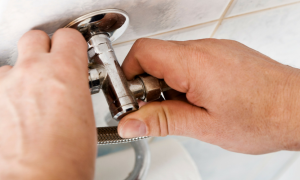Guest Post via Allstate Insurance
There are a number of ways to make your home comfortable; new paint and furnishings are tactics that come to mind. But an often-overlooked factor is proper insulation, which can help better regulate temperatures inside your home.
It can help keep your home warm in the winter and cool in the summer, and, by ensuring that your home runs more efficiently, insulation can even save you money on energy costs.
The U.S. Department of Energy says that, unless your home was built specifically for energy efficiency, you can probably reduce your energy bills by adding more insulation – anywhere from 5 to 30 percent per year.
Of course, the challenge is that different climates and different home styles require different types of insulation, so there’s not a “one size fits all” solution. Here are some basics to help you decide what’s right for you.
Run an Energy Audit First
Where to begin? The best way to determine your insulation needs is to have an energy audit performed on your home. An audit helps you understand how your home is using energy, determine where you might be experiencing leaks and can help you prioritize potential solutions.
An audit will also reveal the “R-value” of existing insulation in your home. The R-value rates how well the material resists the passage of heat or cold. Obviously,
the higher the R-value, the more effective the material.
Insulate from Top to Bottom
According to Energy.gov, your home needs to be properly insulated from the roof down to the foundation for optimal energy efficiency.
That means you need insulation in the attic, in cathedral ceilings (if you have them), inside duct work, on exterior walls, the foundation, and any floors above an unheated space like a garage. Most homes do have some insulation, but it might be old, faulty or inadequate. In some spaces, you may have to identify drafts and seal air leaks before you begin an insulation project.
Pick the Right Insulation for the Job
Once you’ve completed an energy audit and determined the R-value of your existing insulation, you can move forward to deciding what type of insulation is best; often, it’s a mix of types.
To give you an overview, we’ve included a list of the most commonly used insulation types:
- Blanket Insulation: Most commonly made of fiberglass (but also available in cotton, mineral wool, and plastic), blanket, or batt, insulation is what most people picture when they think of insulation. You can use blanket insulation on unfinished walls, and in floors and ceilings. Blanket insulation is relatively inexpensive and, according to Energy.gov, can be installed by a DIYer.
- Blown-In Insulation: Loose-fill insulation (which is blown into place) is an option for any hard-to-reach spaces such as wall cavities, unfinished attic floors and existing walls. It can be made of fiberglass, cellulose (typically recycled newsprint) or even mineral wool.
- Sprayed Foam Insulation: This type of insulation can be added to existing areas that are finished, an irregular shape, or located around an obstruction. The foam-like material is applied using small spray containers and expands to fit its surroundings; it then sets into a solid, airtight mass.
The cost of insulating your home depends on a range of factors, such as how much insulation you need, what type of insulation you choose, and whether you do it yourself or hire a contractor (tips on hiring safely here)
Of course, you can also certainly prioritize projects. Energystar.gov says attics offer the biggest opportunity for savings, so that may be a good place to start. And, don’t forget, there are tax credits, rebates and other savings available for insulation and other weatherization projects.
But, whatever you do, you can rest easy knowing that, in the long run, the investment can pay off in lower energy bills and — of course — enhanced living comfort in your oh-so-cozy home.
This post comes from the editors of The Allstate Blog, which helps people prepare for the unpredictability of life.







[…] Sprayed Foam Insulation: This type of insulation can be added to existing areas that are finished, an irregular shape, or located around an obstruction. The foam-like …read more […]
[…] Sprayed Foam Insulation: This type of insulation can be added to existing areas that are finished, an irregular shape, or located around an obstruction. The foam-like …read more […]
[…] By Lindsay Listanski […]
Choosing the right insulation will certainly help you save your finances and more. I actually learned a couple of these benefits at http://www.ventwerx.com/attic-insulation/blown-in-insulation/
With the right energy efficient comfort systems installed at home, one’s home can be more comfortable both in winters and in summers. Pelle Heating & Air Conditioning has been serving the South Bay Area with quality HVAC installations http://www.pelleheatandairconditioning.com/